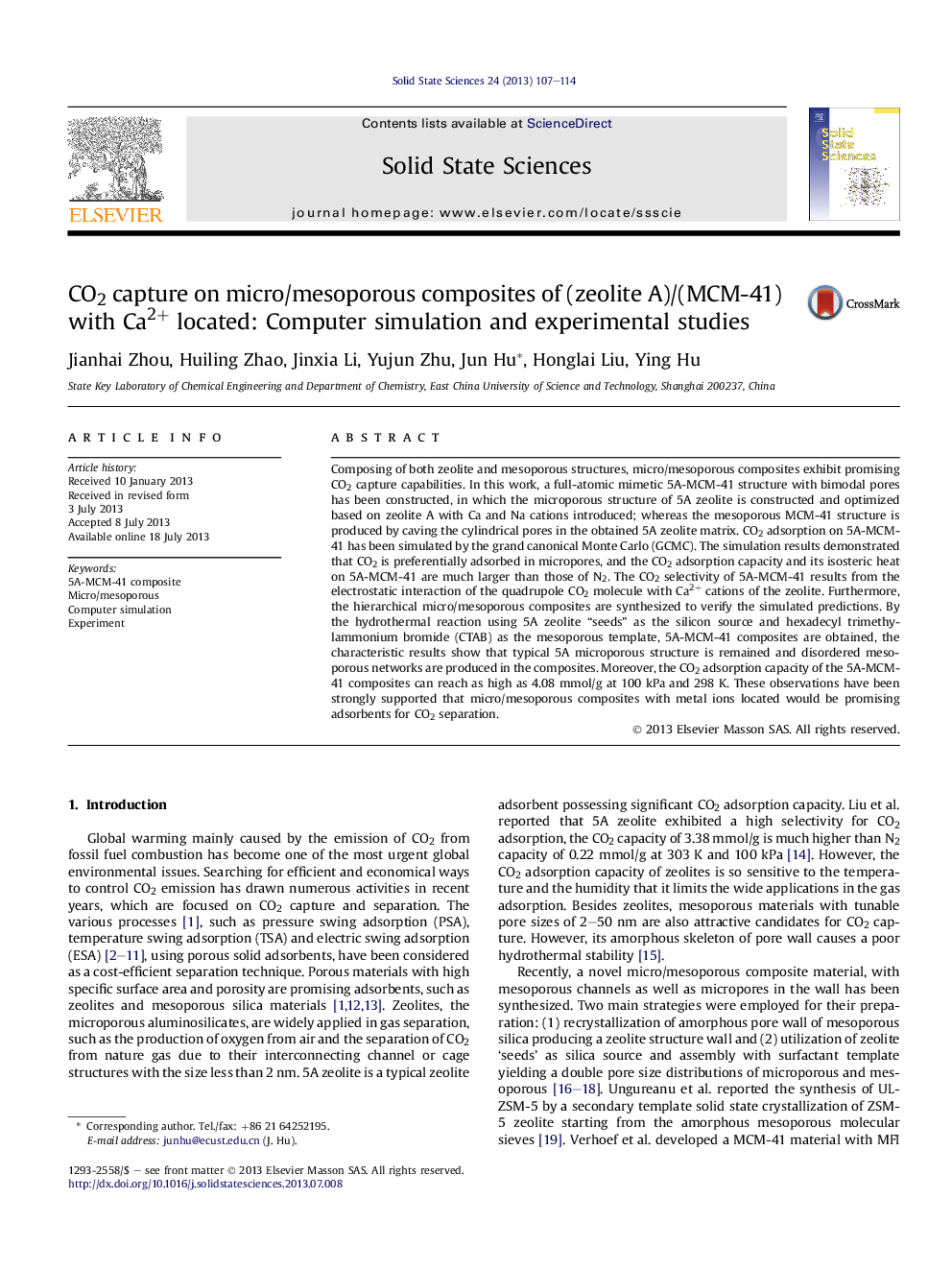| کد مقاله | کد نشریه | سال انتشار | مقاله انگلیسی | نسخه تمام متن |
|---|---|---|---|---|
| 1504536 | 1510998 | 2013 | 8 صفحه PDF | دانلود رایگان |

Composing of both zeolite and mesoporous structures, micro/mesoporous composites exhibit promising CO2 capture capabilities. In this work, a full-atomic mimetic 5A-MCM-41 structure with bimodal pores has been constructed, in which the microporous structure of 5A zeolite is constructed and optimized based on zeolite A with Ca and Na cations introduced; whereas the mesoporous MCM-41 structure is produced by caving the cylindrical pores in the obtained 5A zeolite matrix. CO2 adsorption on 5A-MCM-41 has been simulated by the grand canonical Monte Carlo (GCMC). The simulation results demonstrated that CO2 is preferentially adsorbed in micropores, and the CO2 adsorption capacity and its isosteric heat on 5A-MCM-41 are much larger than those of N2. The CO2 selectivity of 5A-MCM-41 results from the electrostatic interaction of the quadrupole CO2 molecule with Ca2+ cations of the zeolite. Furthermore, the hierarchical micro/mesoporous composites are synthesized to verify the simulated predictions. By the hydrothermal reaction using 5A zeolite “seeds” as the silicon source and hexadecyl trimethylammonium bromide (CTAB) as the mesoporous template, 5A-MCM-41 composites are obtained, the characteristic results show that typical 5A microporous structure is remained and disordered mesoporous networks are produced in the composites. Moreover, the CO2 adsorption capacity of the 5A-MCM-41 composites can reach as high as 4.08 mmol/g at 100 kPa and 298 K. These observations have been strongly supported that micro/mesoporous composites with metal ions located would be promising adsorbents for CO2 separation.
Figure optionsDownload as PowerPoint slide
Journal: Solid State Sciences - Volume 24, October 2013, Pages 107–114